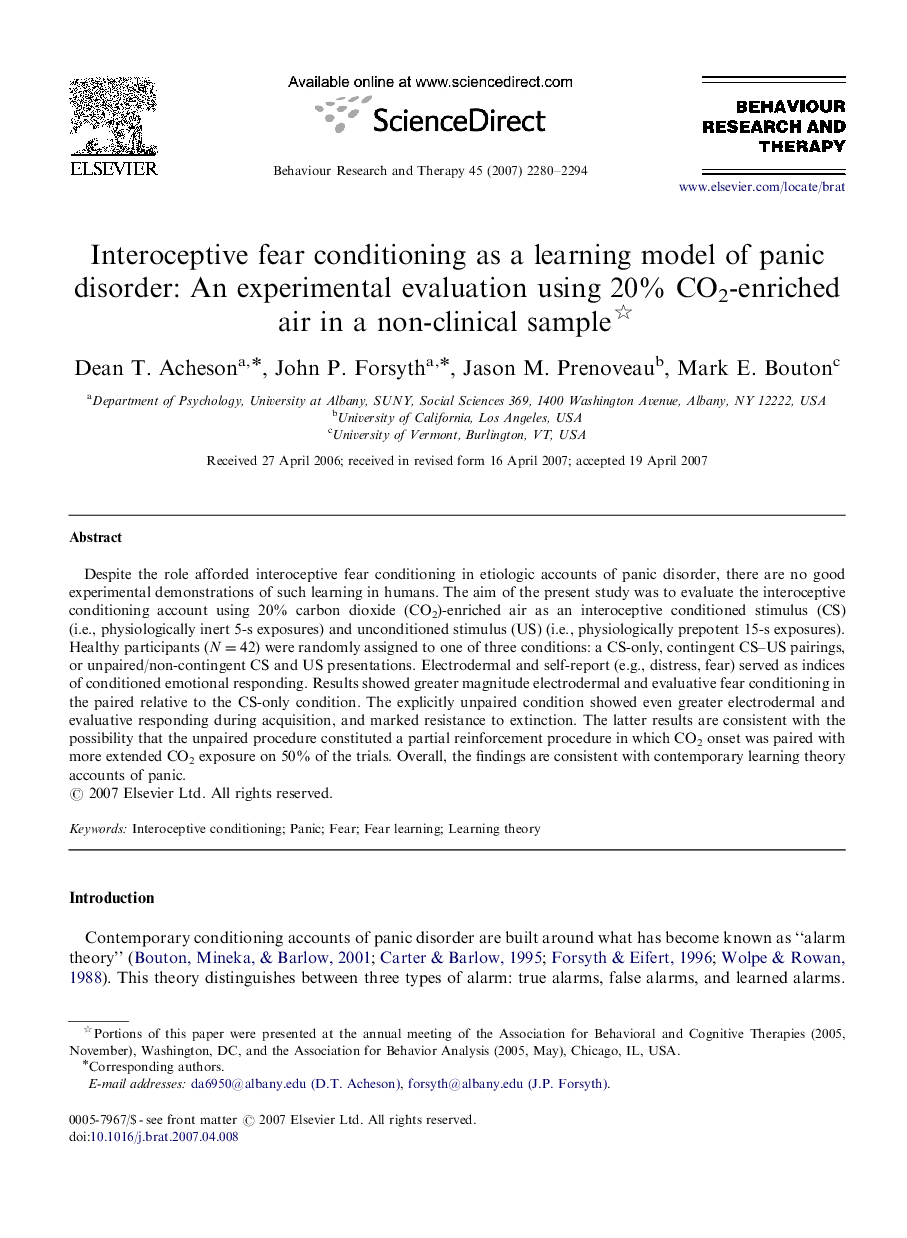| کد مقاله | کد نشریه | سال انتشار | مقاله انگلیسی | نسخه تمام متن |
|---|---|---|---|---|
| 902291 | 916148 | 2007 | 15 صفحه PDF | دانلود رایگان |

Despite the role afforded interoceptive fear conditioning in etiologic accounts of panic disorder, there are no good experimental demonstrations of such learning in humans. The aim of the present study was to evaluate the interoceptive conditioning account using 20% carbon dioxide (CO2)-enriched air as an interoceptive conditioned stimulus (CS) (i.e., physiologically inert 5-s exposures) and unconditioned stimulus (US) (i.e., physiologically prepotent 15-s exposures). Healthy participants (N=42) were randomly assigned to one of three conditions: a CS-only, contingent CS–US pairings, or unpaired/non-contingent CS and US presentations. Electrodermal and self-report (e.g., distress, fear) served as indices of conditioned emotional responding. Results showed greater magnitude electrodermal and evaluative fear conditioning in the paired relative to the CS-only condition. The explicitly unpaired condition showed even greater electrodermal and evaluative responding during acquisition, and marked resistance to extinction. The latter results are consistent with the possibility that the unpaired procedure constituted a partial reinforcement procedure in which CO2 onset was paired with more extended CO2 exposure on 50% of the trials. Overall, the findings are consistent with contemporary learning theory accounts of panic.
Journal: Behaviour Research and Therapy - Volume 45, Issue 10, October 2007, Pages 2280–2294